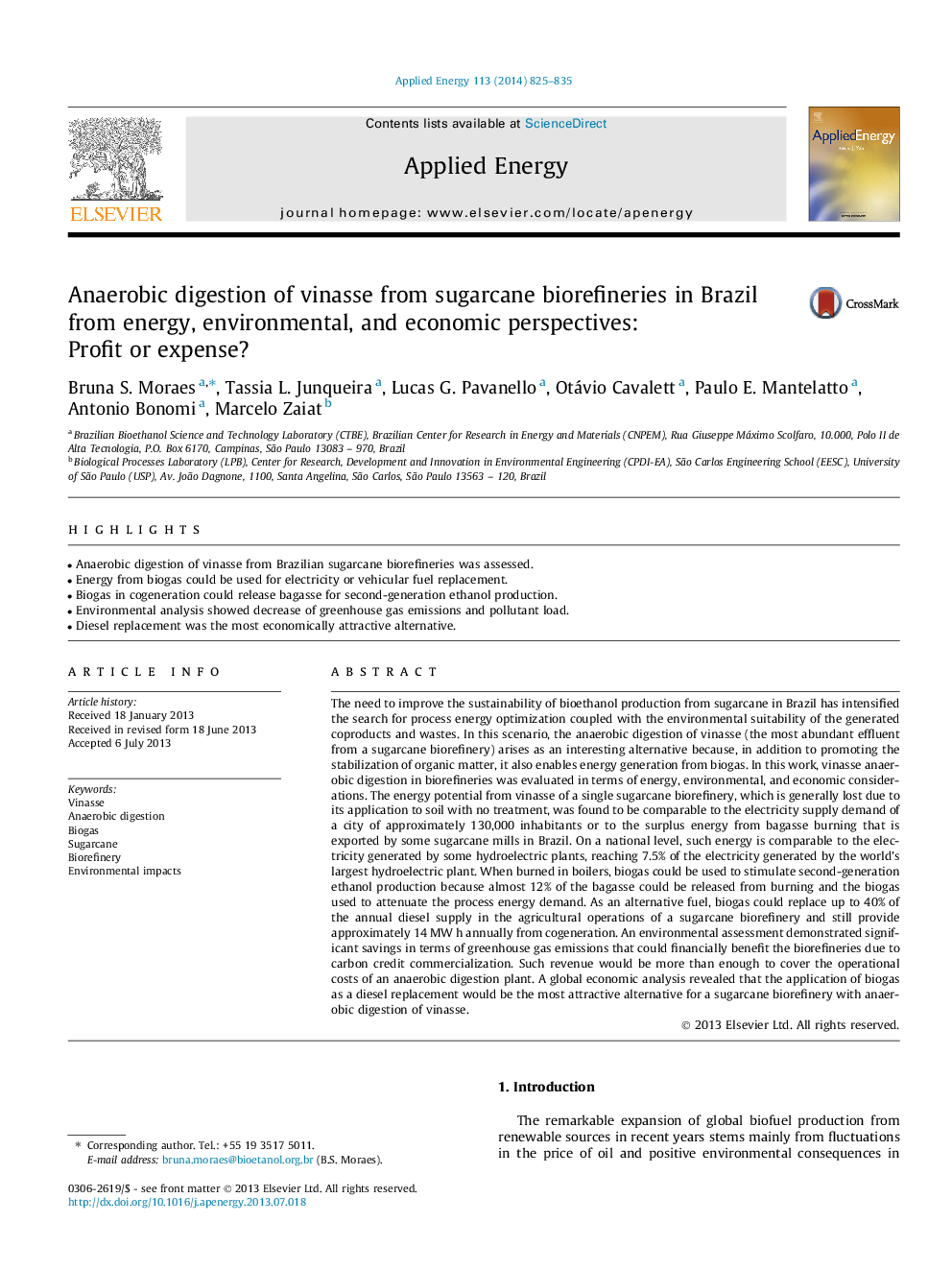| کد مقاله | کد نشریه | سال انتشار | مقاله انگلیسی | نسخه تمام متن |
|---|---|---|---|---|
| 6692037 | 501912 | 2014 | 11 صفحه PDF | دانلود رایگان |
عنوان انگلیسی مقاله ISI
Anaerobic digestion of vinasse from sugarcane biorefineries in Brazil from energy, environmental, and economic perspectives: Profit or expense?
دانلود مقاله + سفارش ترجمه
دانلود مقاله ISI انگلیسی
رایگان برای ایرانیان
کلمات کلیدی
موضوعات مرتبط
مهندسی و علوم پایه
مهندسی انرژی
مهندسی انرژی و فناوری های برق
پیش نمایش صفحه اول مقاله

چکیده انگلیسی
The need to improve the sustainability of bioethanol production from sugarcane in Brazil has intensified the search for process energy optimization coupled with the environmental suitability of the generated coproducts and wastes. In this scenario, the anaerobic digestion of vinasse (the most abundant effluent from a sugarcane biorefinery) arises as an interesting alternative because, in addition to promoting the stabilization of organic matter, it also enables energy generation from biogas. In this work, vinasse anaerobic digestion in biorefineries was evaluated in terms of energy, environmental, and economic considerations. The energy potential from vinasse of a single sugarcane biorefinery, which is generally lost due to its application to soil with no treatment, was found to be comparable to the electricity supply demand of a city of approximately 130,000 inhabitants or to the surplus energy from bagasse burning that is exported by some sugarcane mills in Brazil. On a national level, such energy is comparable to the electricity generated by some hydroelectric plants, reaching 7.5% of the electricity generated by the world's largest hydroelectric plant. When burned in boilers, biogas could be used to stimulate second-generation ethanol production because almost 12% of the bagasse could be released from burning and the biogas used to attenuate the process energy demand. As an alternative fuel, biogas could replace up to 40% of the annual diesel supply in the agricultural operations of a sugarcane biorefinery and still provide approximately 14Â MWÂ h annually from cogeneration. An environmental assessment demonstrated significant savings in terms of greenhouse gas emissions that could financially benefit the biorefineries due to carbon credit commercialization. Such revenue would be more than enough to cover the operational costs of an anaerobic digestion plant. A global economic analysis revealed that the application of biogas as a diesel replacement would be the most attractive alternative for a sugarcane biorefinery with anaerobic digestion of vinasse.
ناشر
Database: Elsevier - ScienceDirect (ساینس دایرکت)
Journal: Applied Energy - Volume 113, January 2014, Pages 825-835
Journal: Applied Energy - Volume 113, January 2014, Pages 825-835
نویسندگان
Bruna S. Moraes, Tassia L. Junqueira, Lucas G. Pavanello, Otávio Cavalett, Paulo E. Mantelatto, Antonio Bonomi, Marcelo Zaiat,